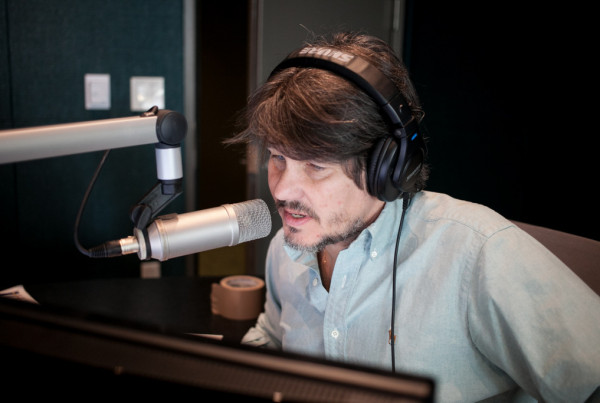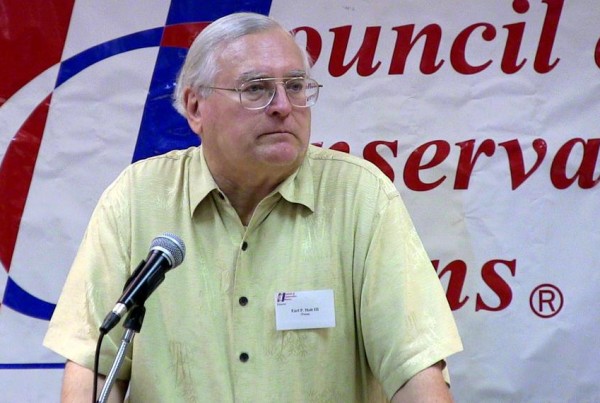This story originally appeared on Inside Energy.
The grid control room at Østkraft, on the Danish island of Bornholm, is a mix of old and new. On one side of the room, huge computer monitors detail the flow of electricity throughout the system. On the other, printed circuit diagrams hang on 60s-era control boards with dancing needles. Lounging at a desk in a grey jumpsuit and thick eyeglasses, engineer Erik Malmkvist jams to early 90s dance music, while explaining that his job is to do as little as possible.
“When I shall do anything, it costs us money,” he says. “So, I do as little as possible.”
Doing as little as possible has gotten more difficult in recent years though, as Bornholm has stepped up its share of renewable energy. It’s much easier to balance a system that relies on coal than on fluctuating power sources, like wind and solar. Malmkvist grabs a graph printing out of one of the analog machines on the wall.
“You can see here the wind, it goes up and down all the time,” he says.
Bornholm gets half of its power from wind and solar. But of course,that power supply is intermittent, and doesn’t always match the times of day when people are using the most electricity. Malmkvist grabs another printout.
“All days look alike,” he says. “You can see, people get up in the morning, about half past 5, and then they go to eat, then don’t do anything anymore.”
Right now, when demand spikes and the wind isn’t blowing, utilities like Østkraft ramp up production at their coal or gas plants, but Denmark is planning to be fossil-fuel free in its power sector by 2030, which means soon, that won’t be an option.
So, instead of making supply meet demand, Østkraft is testing what it would take to make demand meet supply.
“Demand response has nothing at all to do with energy savings. It has to do with using the energy when it’s there,” says Maja Bendtsen, who works for the utility and is in charge of a project called EcoGrid EU.
The project has been testing so-called demand response with roughly 2000 households on Bornholm for the last few years. But Bendtsen’s first introduction to the idea of demand response came when she was a kid. Her family had a wind turbine and when the wind was blowing hard, they turned up all the radiator valves in the house.
“Because it was was windy and the wind turbine was spinning anyways, the energy was free and abundant,” she says.
The idea behind EcoGrid is the same: use electricity when there’s plenty of cheap, renewable power, and cut back when there isn’t. The project focuses on heating and cooling, which are among the biggest electricity users, but unlike when Bendtsen was a kid, the EcoGrid project automates it, so no one has to run around opening and closing radiator valves.
“As a participant in the project, you say which temperature do I want,” Bendtsen says. If you want your house to be between 68 and 72 degrees, for example, the utility controls your heating to keep it within that range.
For the utility, that’s valuable: being able to temporarily shut off hundreds or thousands of heaters or air conditioners can keep the electricity grid in balance without having expensive, polluting power plants on standby and without building thousands of miles of new transmission lines.
“We are over-investing because we are not utilizing the energy we produce in a smart way,” says Jørgen Christensen, the chief technology officer of Dansk Energi, the Danish energy association. He says it will be too costly to reach the country’s renewable energy goals without demand response. But convincing customers that there are benefits to allowing someone else to control their heating or electric car charging takes time.
“If it’s totally new for you, you say, ‘let’s wait and see what the neighbor does,’” Christensen says.
That might be the biggest barrier to demand response in Denmark, but what about elsewhere?
In the United States, there are residential demand response projects, but none of them use automation, which limits their potential benefit to the overall grid. Start talking about controlling people’s heating systems in a fiercely independent place like Wyoming though and well, you can imagine how the conversation would go.
This reporting was supported in part by a grant from the Heinrich Böll Foundation, and produced by Inside Energy reporter Stephanie Joyce.















